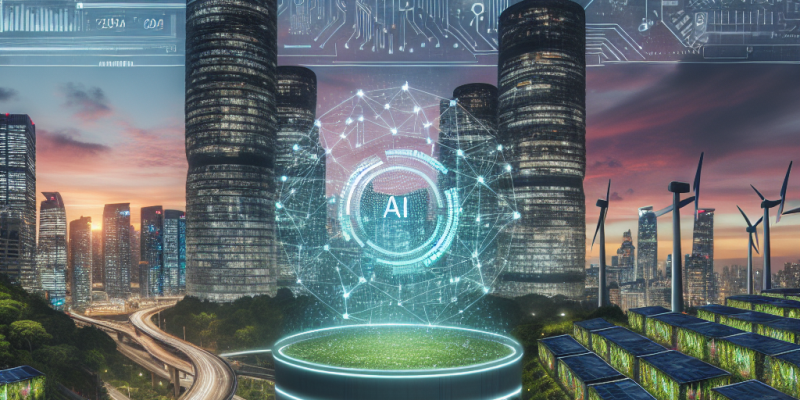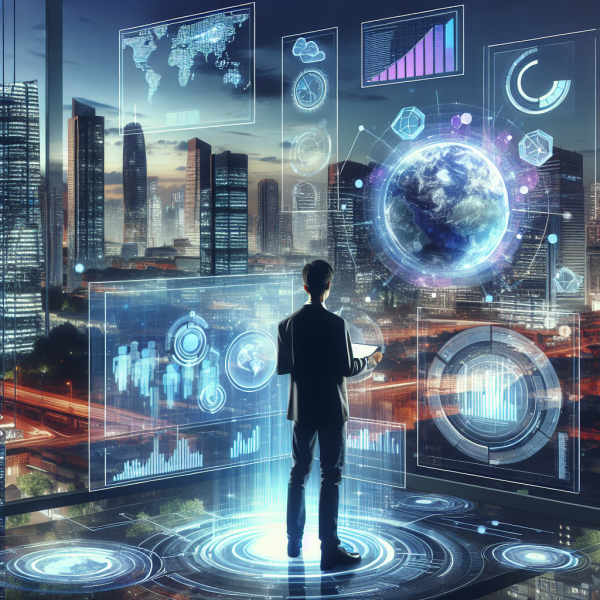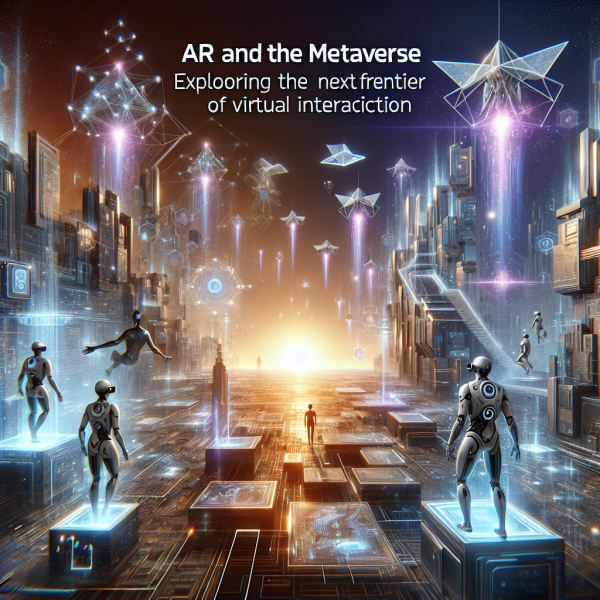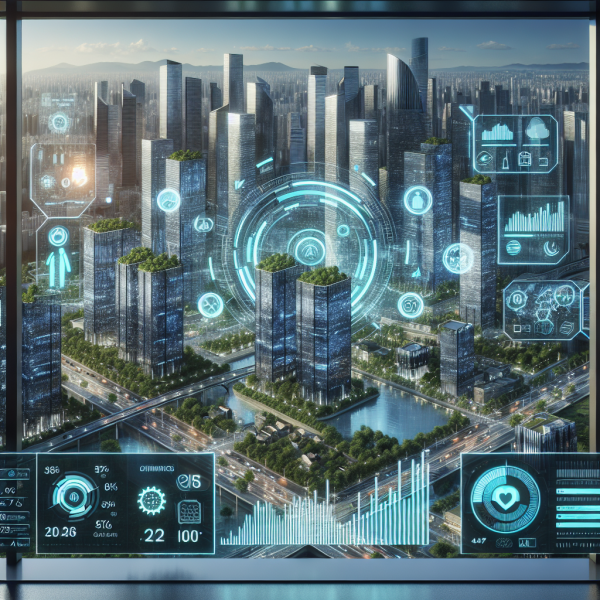The Intersection of AI and Sustainability: Emerging Technologies Transforming the Green Economy in 2024

The Intersection of AI and Sustainability: Emerging Technologies Transforming the Green Economy in 2024
As we stand on the brink of a new era in 2024, the convergence of artificial intelligence (AI) and sustainability has begun to reshape our economic landscape. The ongoing climate crisis, coupled with increasing demand for sustainable solutions, has given rise to innovative technologies that leverage AI’s capabilities to create a more resilient and eco-friendly world. This article explores how these emerging technologies are not only enhancing efficiency but also driving systemic changes in the green economy.
AI-Powered Resource Management
One of the most significant advancements in the intertwining of AI and sustainability is in resource management. AI technologies use vast amounts of data to optimize the use of resources such as water, energy, and raw materials. For instance, smart irrigation systems employ machine learning algorithms to analyze weather patterns, soil moisture levels, and crop health, leading to precise watering schedules that save water while boosting agricultural yield. This capability is critical as global water scarcity intensifies.
Moreover, AI-driven predictive analytics in energy management helps businesses and consumers to make data-informed decisions about consumption patterns, peak usage times, and even the integration of renewable energy sources. Smart grids, powered by AI, allow for real-time monitoring and distribution of energy, facilitating a smoother transition to renewable sources and minimizing waste.
Circular Economy and Waste Reduction
The concept of a circular economy has gained momentum as societies recognize the importance of reducing waste and maximizing the lifecycle of products. AI technologies are essential in this transition, enabling efficient recycling and waste management processes. Advanced AI algorithms can sort materials with a higher degree of accuracy than human laborers, ensuring that recyclable materials are correctly processed and incorporated back into the supply chain.
AI is also revolutionizing product design through predictive analytics, informing manufacturers about the longevity and recyclability of materials before production begins. By anticipating the full lifecycle of a product, companies can design for disassembly, enabling easier recycling and reducing landfill contributions.
Sustainable Supply Chain Optimization
The complexity of global supply chains poses a substantial challenge to sustainability efforts. However, the adoption of AI in supply chain management is changing that narrative. AI can analyze data across multiple stages of the supply chain, identifying inefficiencies, predicting disruptions, and proposing solutions to minimize environmental impact.
For example, AI can help companies select suppliers that adhere to sustainable practices by analyzing their carbon emissions and ethical sourcing policies. This data-driven approach encourages transparency and promotes responsible practices across the supply chain, aligning with the increasing consumer demand for ethical products.
Enhancing Renewable Energy Adoption
The integration of AI into renewable energy systems is another crucial aspect of transforming the green economy. AI algorithms optimize the performance of renewable energy sources by predicting energy generation based on weather patterns, demand forecasts, and system performance data. Wind and solar farms are deploying AI-based systems that maximize energy output while minimizing operational costs.
Furthermore, AI facilitates energy storage solutions, critical for balancing supply and demand in renewable energy. Machine learning models can predict energy generation and consumption patterns, allowing for smart energy storage solutions that improve reliability and stability in renewable energy delivery.
AI for Climate Change Mitigation
Mitigating climate change requires innovative solutions, and AI is at the forefront of developing these approaches. From climate modeling to carbon capture, AI technologies are enabling researchers and decision-makers to better understand the effects of climate change and develop effective responses. AI can analyze vast datasets to identify trends and provide insights, allowing for more efficient resource allocation and targeted mitigation strategies.
For instance, AI-driven climate simulation models can forecast the impact of various policy decisions, empowering governments and organizations to make informed choices that align with long-term sustainability goals.
Conclusion
As we move further into 2024, the intersection of AI and sustainability presents a promising avenue for addressing some of the most pressing challenges facing humanity. Emerging technologies are driving significant transformation across various sectors of the green economy, from resource management to waste reduction, supply chain optimization, renewable energy adoption, and climate change mitigation.
While the potential is immense, it is crucial to approach these advancements with a commitment to ethical practices and social responsibility. Collaboration among governments, businesses, and civil society will be vital in ensuring that AI technologies contribute positively to sustainability goals, fostering a greener, more equitable future for all. The road ahead is paved with opportunity, and as we harness the power of AI, we take bold steps toward a sustainable planet.













